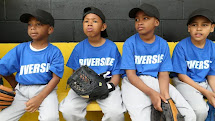
The Amazonía Region is a region in southern Colombia. It comprises the departments of Amazonas, Caquetá, Guainía, Putumayo, and Vaupés, and covers an area of 403,000 km², 35% of Colombia's total territory. The region is marked by its unique jungles, part of the Amazon rain forest.
The Land of the USA and the Land of Canada is the entire Indian country’s natural territory. The landscape is marked by its amazing, waters and wildlife, part of the American and Canadian Landscape mountains, interior plains, flat areas, woodlands, and shields,
The Colombian Amazon Indigenous People, American Landscape Indigenous People and Canadian Landscape
Indigenous People is most likely the largest indigenous group discussed on the planet.
Not many can copy their special appearance and create their extraordinary image delights.
Enter Doctor Carlos Julio Dávila Forero, Independent Social Psychologist and Photographer, who for almost a decade has been writing indigenous news in the Amazon for Colombian citizens living in the eastern area.
No rain forest is too extreme, no village is too big and for this original indigenous story interview In addition to having worked with indigenous peoples of the Colombian Amazon tribes, Forero turned his focus to the unexpected…the women, men and children.
What will we discover from Colombian Indigenous mysteries of life style and fashion? Only time will tell.
Philadelphia Front Page News: How many years have you studied the indigenous peoples of Colombia?
Carlos Forero: In addition to having worked with indigenous peoples of the Colombian Amazon tribes, I have studied the indigenous around six years.
PFPN: From which tribe was your first interview and that you talked about their problems?
CF: My first talk or interview was with some indigenous Nonuya, Amazon. They spoke of problems of health, transport on the river due to lack of canoes, bad power because what they mostly eat was the farina and cazabe, made from cassava brava. but I observed that ate fish, meat of animals of Mount and some fruits of the forest, that the nutrian well.
Problems. Lack of Government help for the problems of health, transport, preservation of their culture.
PFPN: What is your report on the male members of the tribe and make their marriages?
CF: In some indigenous cabildos authority is patriarchal and women must undergo what a man says. In some cases, according to your question, the marriage may be monogamo or polygamist.
-In some cabildos indigenous what the chieftain says all must comply and is without any violation. In that case the men decide on the activities of women and their marriage.
PFPN: What is your report on the female tribe members making marriages?
CF: Your question leads me immediately to think matriarchal tribes, where authority is inherited from mother to daughter or niece. That is the basis of the conduct of the Wuayu of la Guajira. There, so a man can have female and should deliver to the parents of the future wedding a good flock of goats or chivas or a lot of land where cultivaran their food.
The Matriarcales tribes such as the Wuayu of la Guajira- women have the authority in tribes and man having more possessions can have his wife.
PFPN: What is his report on those members of the tribe children?
CF: That's a very general question to answer then. For now I can tell you that each chapter or shelter has its own rules on the activity and the management of their children.





















No comments:
Post a Comment
Note: Only a member of this blog may post a comment.